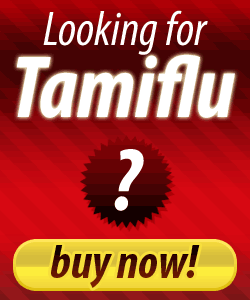ROCHE Holding reported an 11% increase in second-half profit yesterday, helped by cost savings from its takeover of Genentech and higher demand for swine flu drug Tamiflu.
Profit excluding some costs advanced to Sf4,59bn (4,35bn) from Sf4,15bn a year earlier. Fourth-quarter revenue rose 2,8% to Sf12,65bn, Roche said. That fell short of expectations, according to Birgit Kulhoff, an analyst at Rahn & Bodmer in Zurich.
While Roche benefited from greater than expected Tamiflu demand, which soared as the H1N1 virus spread, sales of the company’s cancer medicines, Rituxan and Herceptin, declined in the fourth quarter, falling short of analysts’ forecasts. It said that performance was affected by wholesalers reducing inventory and was not “a prediction into 2010”.
Numbers from January showed a “healthy trend”, chief financial officer Erich Hunziker said yesterday.
Roche, based in Basel, Switzerland, maintained its forecast that earnings per share excluding some items would probably rise at a double-digit pace this year at constant exchange rates.
Revenue was expected to grow in the mid-single-digit range in local currencies this year. The outlook excludes sales of Tamiflu. Roche said it would maintain its dividend policy.
The shares fell Sf2,4, or 1,3%, to Sf178,2 before midday yesterday in Zurich trading. Roche has risen 9,7% in the past year, compared with a 12% gain in the Bloomberg European pharmaceuticals index.
Roche CEO Severin Schwan dismissed speculation that Novartis could sell its stake in its rival to help pay for acquiring eyecare group Alcon, telling CNBC the talk was “pure speculation”.
The Swiss drug maker repeated that it was targeting savings of Sf1bn a year by next year from the 46,8bn purchase of Genentech.
Roche expects to repay 25% of the debt raised to finance it by the end of this year and to “return to a net cash position” by 2015.
Revenue from Tamiflu has risen since the outbreak of swine flu in April. The medicine generated Sf3,2bn in sales last year, more than the company’s October estimate of about Sf2,7bn. Tamiflu was likely to generate about Sf1,2bn in sales this year, Roche said yesterday, up from an earlier estimate of Sf700m.
Sales of the medicine, which has been shown to ease the symptoms of infection with the virus, generated Sf1,2bn in revenue in the fourth quarter, compared with Sf181m a year ago.
The H1N1 virus had been confirmed in more than 209 countries worldwide and had caused at least 14711 deaths as of January 29, the World Health Organisation (WHO) said last week. Swine flu causes little more than a fever and cough in most cases. WHO director-general Margaret Chan said recently that the worst may be over in the northern hemisphere. Bloomberg
Profit excluding some costs advanced to Sf4,59bn (4,35bn) from Sf4,15bn a year earlier. Fourth-quarter revenue rose 2,8% to Sf12,65bn, Roche said. That fell short of expectations, according to Birgit Kulhoff, an analyst at Rahn & Bodmer in Zurich.
While Roche benefited from greater than expected Tamiflu demand, which soared as the H1N1 virus spread, sales of the company’s cancer medicines, Rituxan and Herceptin, declined in the fourth quarter, falling short of analysts’ forecasts. It said that performance was affected by wholesalers reducing inventory and was not “a prediction into 2010”.
Numbers from January showed a “healthy trend”, chief financial officer Erich Hunziker said yesterday.
Roche, based in Basel, Switzerland, maintained its forecast that earnings per share excluding some items would probably rise at a double-digit pace this year at constant exchange rates.
Revenue was expected to grow in the mid-single-digit range in local currencies this year. The outlook excludes sales of Tamiflu. Roche said it would maintain its dividend policy.
The shares fell Sf2,4, or 1,3%, to Sf178,2 before midday yesterday in Zurich trading. Roche has risen 9,7% in the past year, compared with a 12% gain in the Bloomberg European pharmaceuticals index.
Roche CEO Severin Schwan dismissed speculation that Novartis could sell its stake in its rival to help pay for acquiring eyecare group Alcon, telling CNBC the talk was “pure speculation”.
The Swiss drug maker repeated that it was targeting savings of Sf1bn a year by next year from the 46,8bn purchase of Genentech.
Roche expects to repay 25% of the debt raised to finance it by the end of this year and to “return to a net cash position” by 2015.
Revenue from Tamiflu has risen since the outbreak of swine flu in April. The medicine generated Sf3,2bn in sales last year, more than the company’s October estimate of about Sf2,7bn. Tamiflu was likely to generate about Sf1,2bn in sales this year, Roche said yesterday, up from an earlier estimate of Sf700m.
Sales of the medicine, which has been shown to ease the symptoms of infection with the virus, generated Sf1,2bn in revenue in the fourth quarter, compared with Sf181m a year ago.
The H1N1 virus had been confirmed in more than 209 countries worldwide and had caused at least 14711 deaths as of January 29, the World Health Organisation (WHO) said last week. Swine flu causes little more than a fever and cough in most cases. WHO director-general Margaret Chan said recently that the worst may be over in the northern hemisphere. Bloomberg




No comments:
Post a Comment
Note: Only a member of this blog may post a comment.